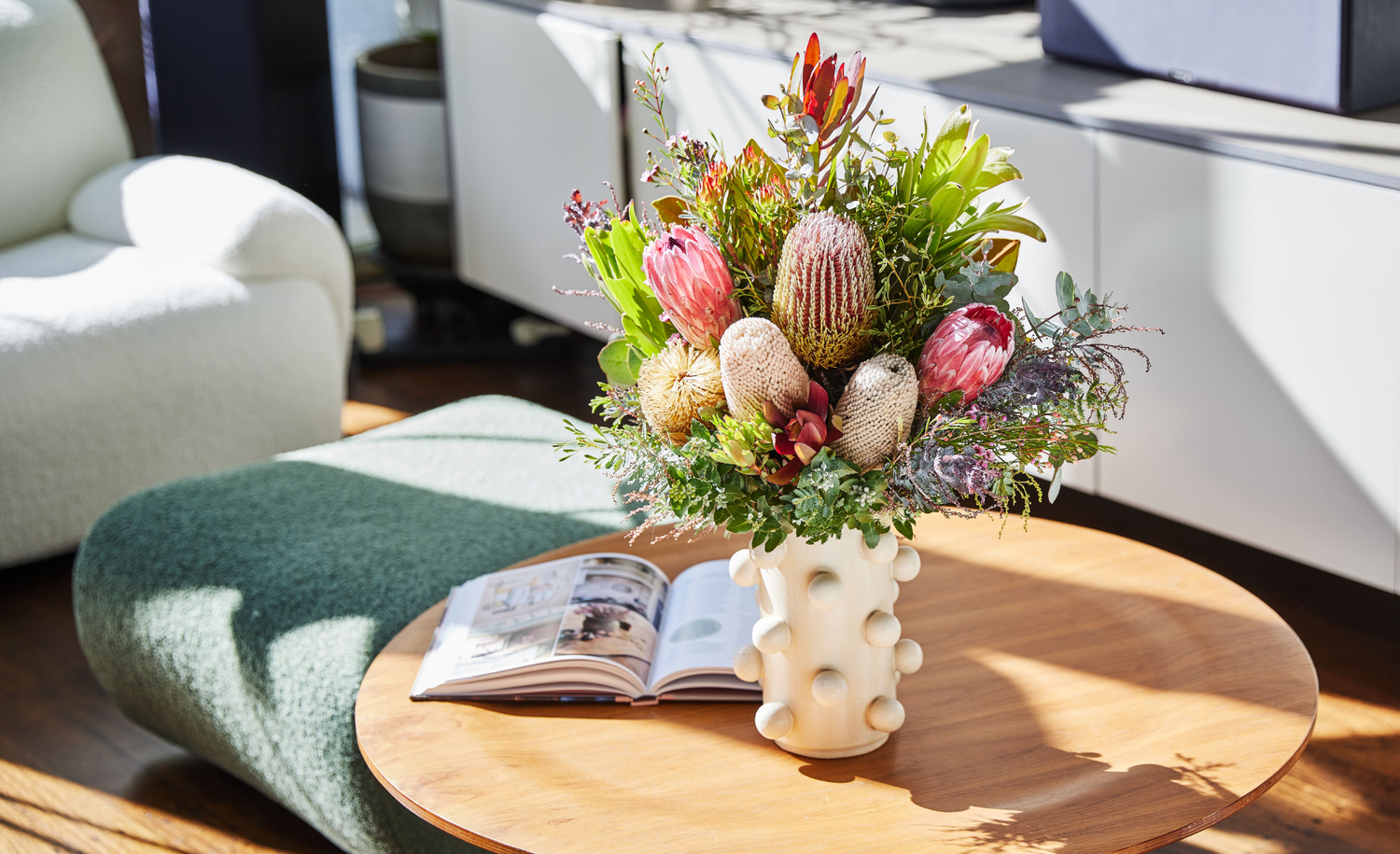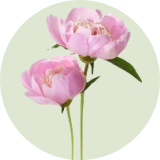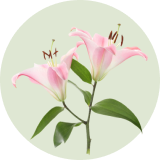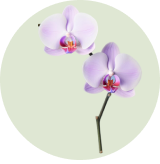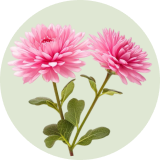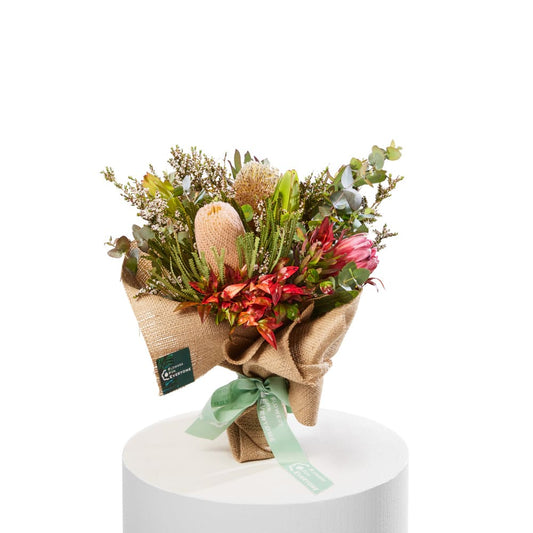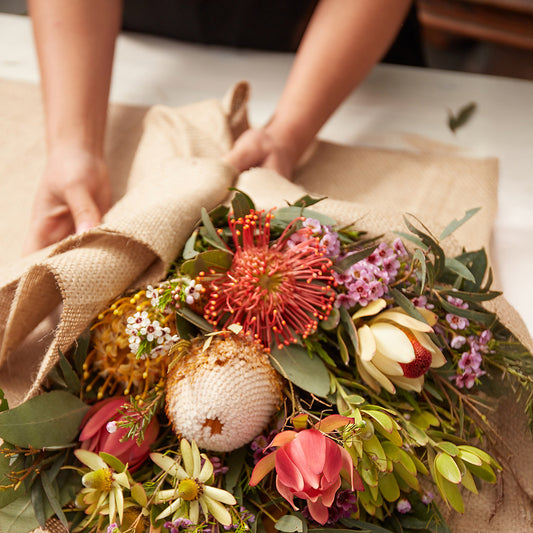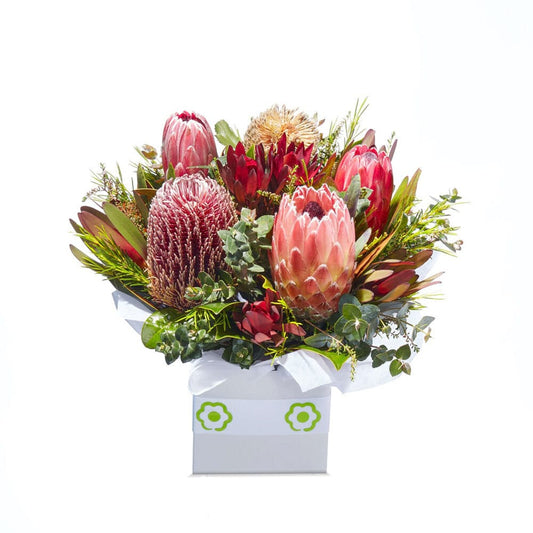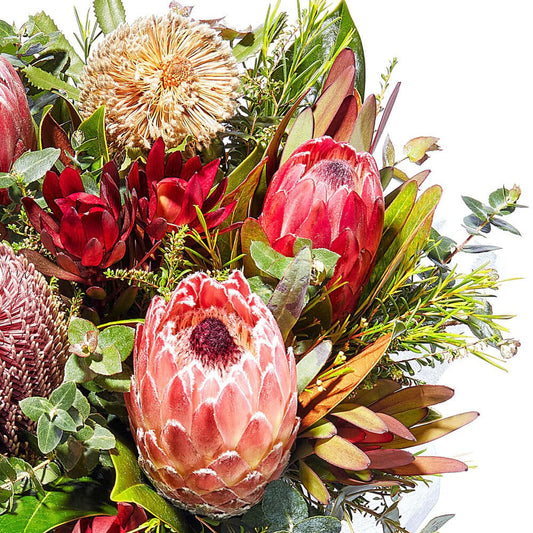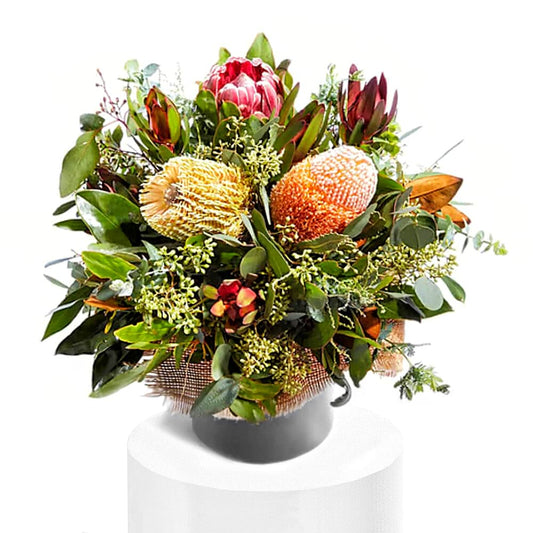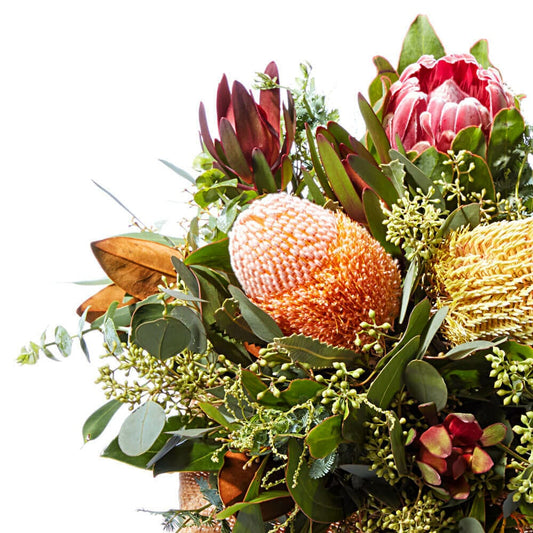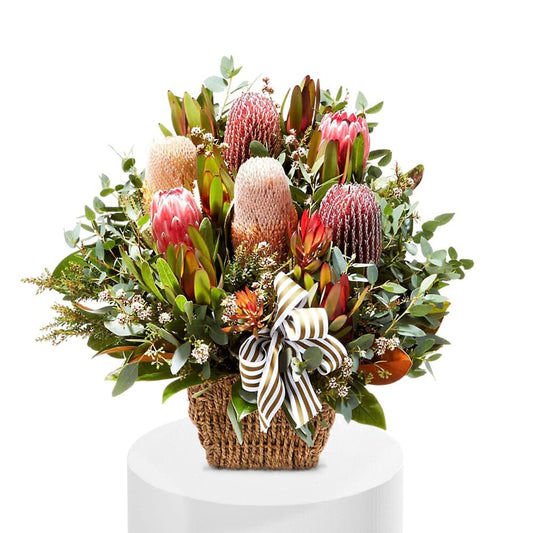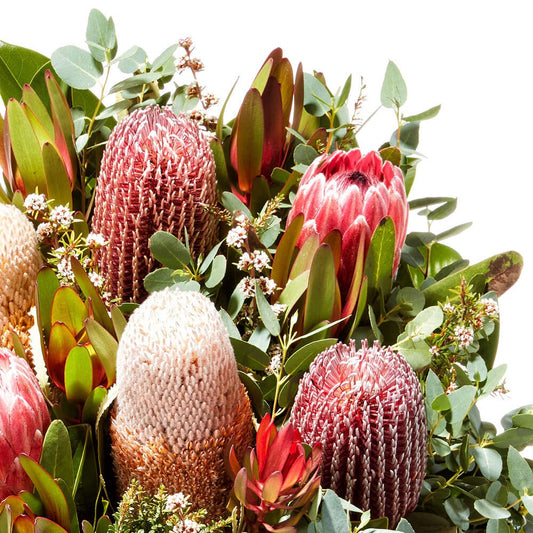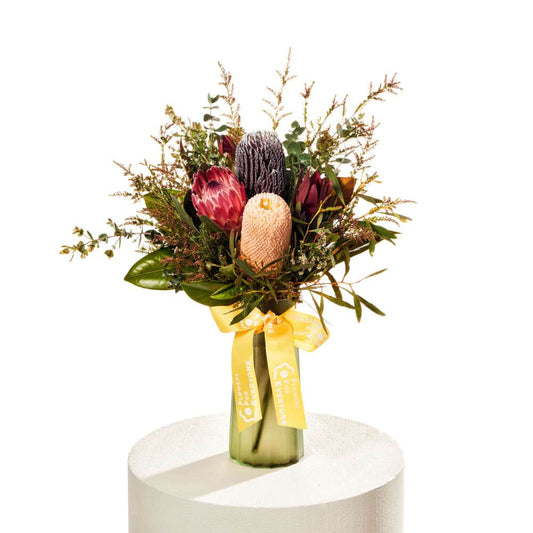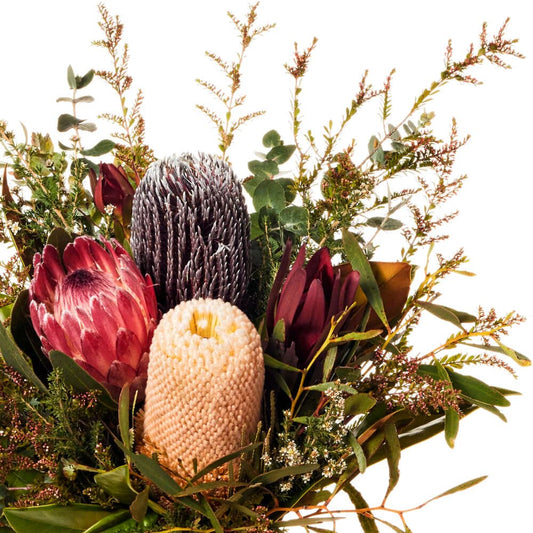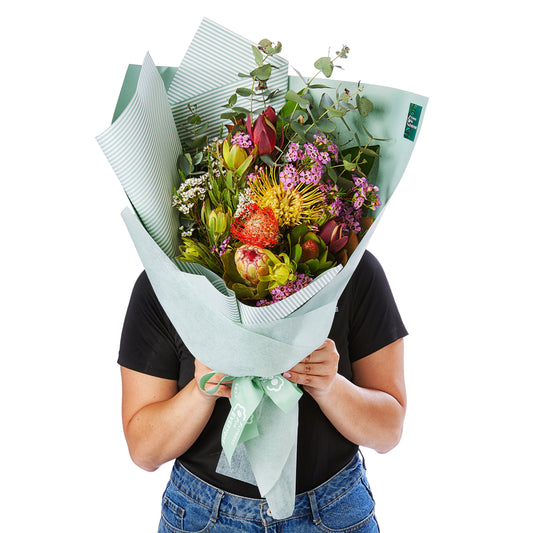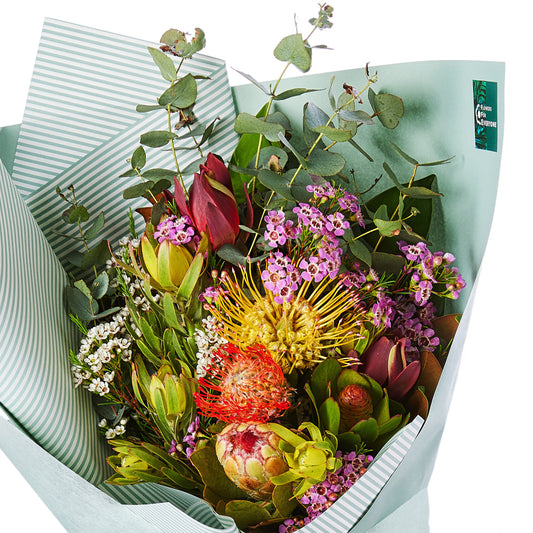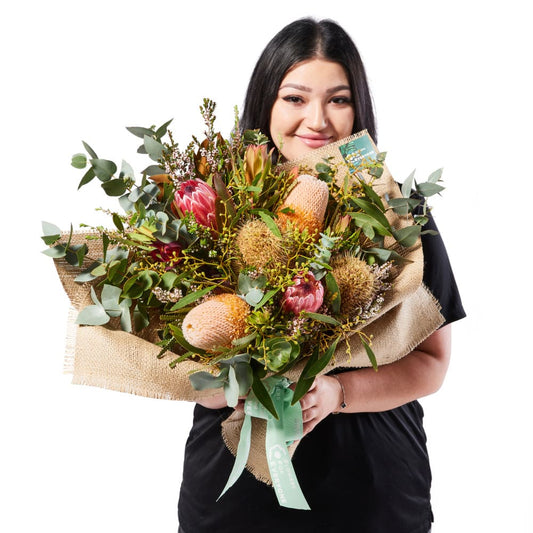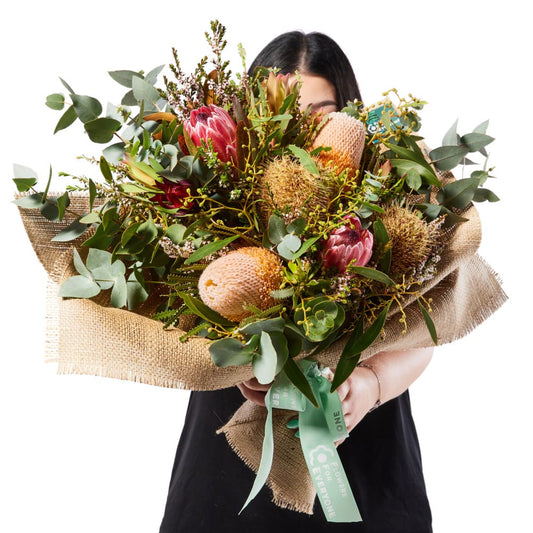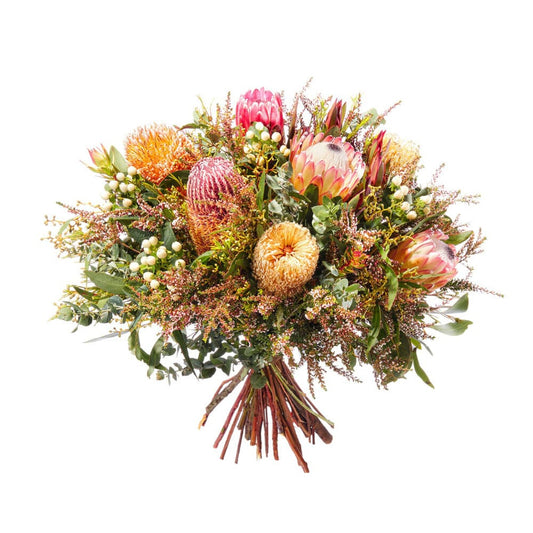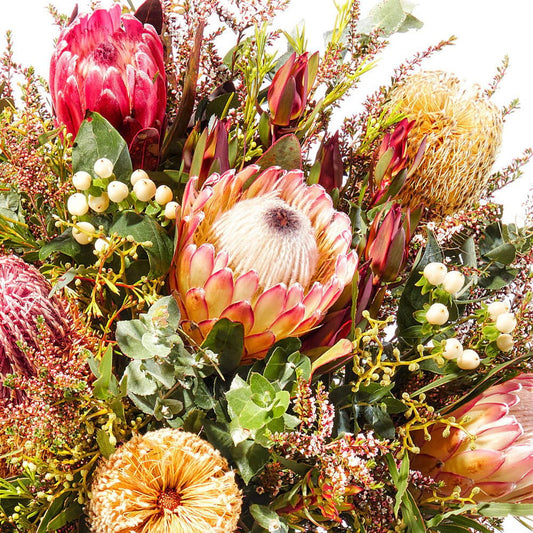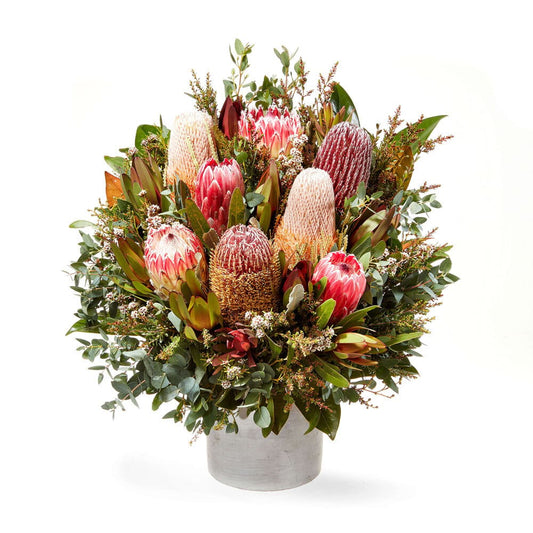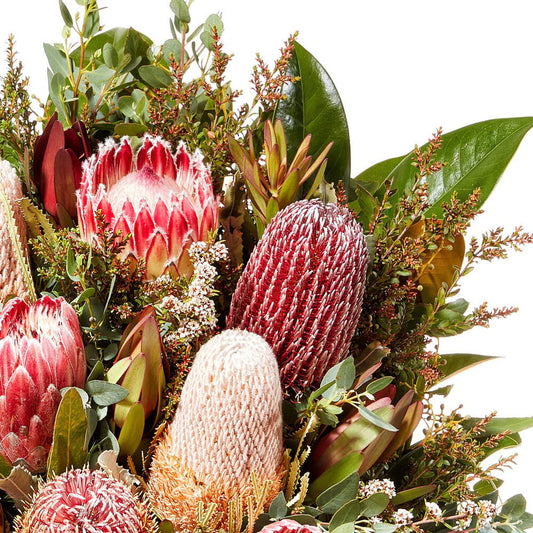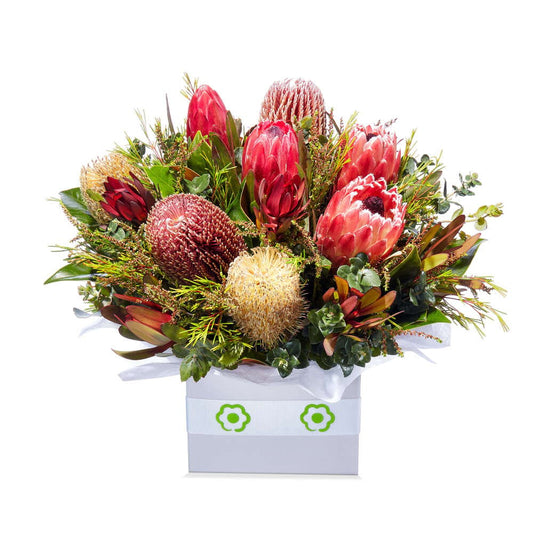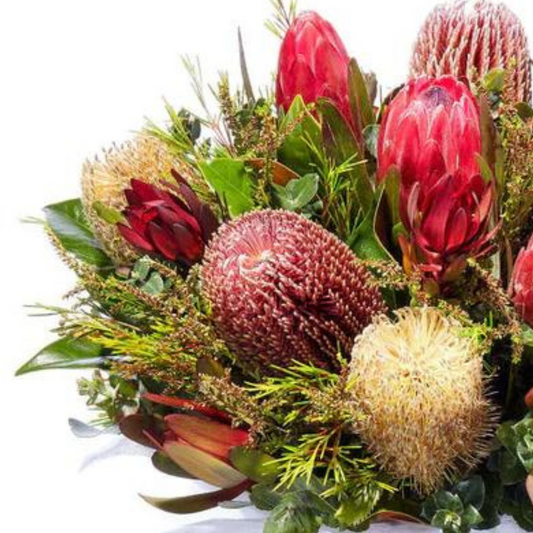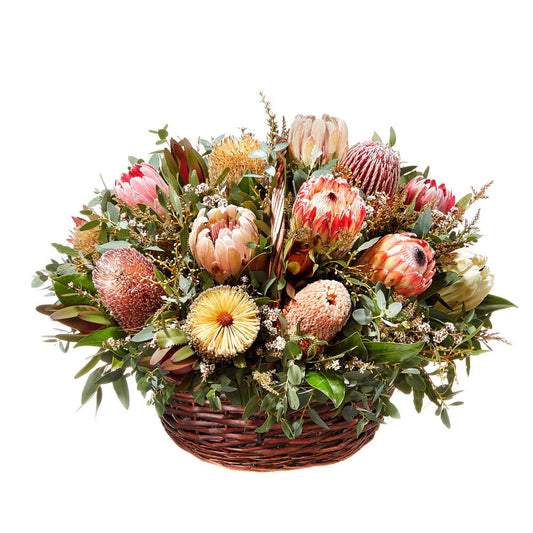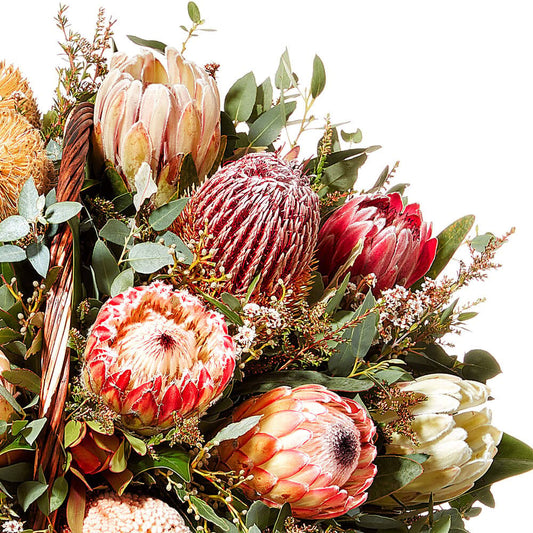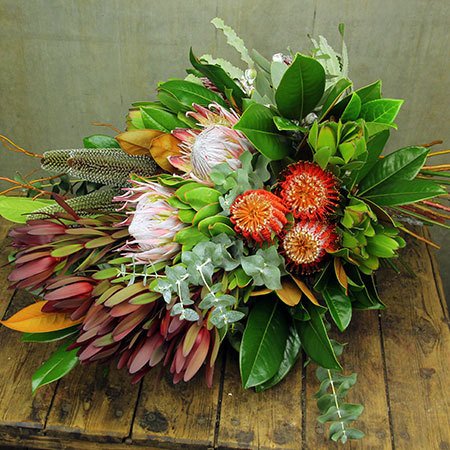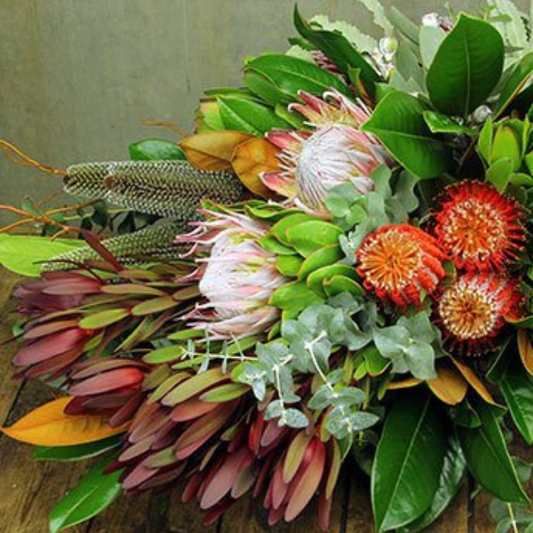Native Australian Flowers
Native Australian flowers are known for their striking forms, vibrant colours, and unique textures. Popular choices include kangaroo paws, which have distinctively shaped flowers that resemble the paw of a kangaroo, and the Sturt’s Desert Pea, with its iconic bright red petals. Other favourites are Banksias, Eucalyptus, and Smokebush. Each of these flowers brings a piece of the Australian bush to life, reflecting the diverse beauty of the country’s flora.
Native blooms like yellow flowers and white flowers also play a significant role in creating striking native flower arrangements. For example, the floral emblem of Western Australia is the stunning red and green kangaroo paw, while the waratah serves as the floral emblem of New South Wales. Including such significant native plants in a flower arrangement not only creates a beautiful visual display but also honours Australia’s natural heritage.
Australian Native Flower Bouquets & Arrangements
Choosing an Australian native flower bouquet or arrangement is a wonderful way to celebrate the natural beauty of these hardy plants. Our arrangements are designed to feature a combination of native flowers that vary in shape, colour, and texture, ensuring each bouquet is truly unique. From elegant vases and rustic baskets to modern boxed arrangements, there’s something for every style and occasion.
Our Rustic Native Flower Bouquet is a popular choice for its mix of vibrant native flowers, including bright red and pink flowers. Another standout is the Earthy Natives in Pot, which features a lush combination of native blooms and greenery, ideal for creating a relaxed, rustic aesthetic. For those looking for a versatile gift, the Lady Wildflower Box combines native flower heads and native plants to create a beautiful arrangement that suits both formal and informal settings.
Same Day Native Flower Delivery
We offer same day native flower delivery across Sydney, Brisbane and Melbourne, making it easy to send a beautiful native flower bouquet to loved ones, friends, or colleagues. Our native flowers delivery service ensures your flowers arrive fresh and vibrant, whether it’s a last-minute gift or a planned gesture.
Cut Off Times for Same Day Delivery
To be eligible for same-day delivery, ensure your order is placed before the following cut-off times:
- Residential Orders:
- Monday to Friday: Place your order before 5pm.
- Saturday: Place your order before 2pm.
- Sunday: Sydney only, order before 2pm. (No Sunday delivery in Brisbane.)
- Business Orders:
- Monday to Sunday: Place your order before 2pm. If the business is closed over the weekend, delivery will occur on the next business day.
- School Orders:
- Monday to Friday: Place your order before 10am.
- No weekend delivery.
Check out our full list of suburbs for flower delivery.
Why Choose Australian Native Flowers?
Australian native flowers aren’t just visually stunning—they’re also long-lasting and hardy, making them ideal for a variety of settings and occasions. Many of these flowers, such as the kangaroo paws and banksias, are easy to grow and thrive in both gardens and indoor arrangements. They are also a wonderful option for those looking to create a more eco-friendly and sustainable floral gift, as native flowers naturally suit the local climate and require less water.
Our range of native flower arrangements includes both traditional and contemporary designs, allowing you to choose the perfect style to suit your needs. Whether you’re looking for a classic bouquet or something more unique like our Dreamy Native Basket, these arrangements are bound to impress.
